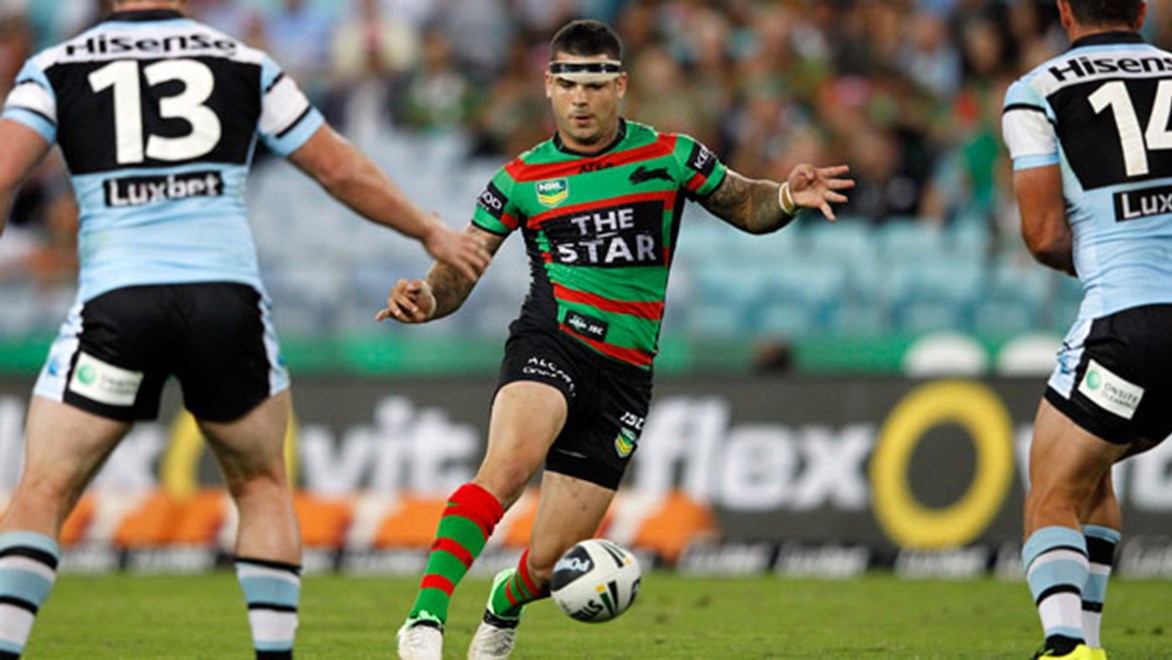

Every week in every NRL clash we are reminded of the importance of teams executing a good kicking game – in fact, almost a quarter of all tries scored so far this season (23 per cent) have originated from kicks. And with rigid defensive structures proving almost impossible to break at times, it often falls to kicks to decide tight games. Given the majority of teams are so closely matched in the Telstra Premiership, making a last-tackle option count can often be the difference between getting the two competition points, or not.
Attacking kicks are not just about trying to score tries. You will hear a lot of coaches using the term building pressure, which refers to attacking teams forcing the opposition to face repeat defensive sets. This takes a lot of energy out of the opposing team and hopefully by doing this your players can work the opposition into submission when the cracks begin to show. After all, nothing opens up holes better than tired defenders!
A team’s kicking game varies more than any other facet of play from week to week. Coaches spend a lot of time studying opposition teams’ strengths and weaknesses in this area. As a coach there is a whole range of intricacies that you will examine for attacking kicks. You have a good look at both the wingers and the fullback, studying their positional play and coverage to the ball, plus how well they can catch under pressure. If these players are all good catchers under pressure, then you may (as a lot of teams are now doing) try to isolate the smaller man three players in from the sideline (usually the half), and kick it on top of him, backing your outside backs to out-leap him.
There is then a whole gambit of different types of attacking kicks to consider. Do you go high and contest the bomb, or kick flat and over the top of their last defender? Alternatively, the banana kick may be more appropriate – or you can use the famous little grubber that Alfie Langer made an art form. The options really are endless.
Kickers need to be able to deliver a variety of kicks with speed and accuracy – skill that is honed through many extra hours away from training, perfecting these types of kicks. Other times it may be for 20 minutes after a session, focusing on the attacking and defensive kicks you want to employ in the coming week’s game.
Penrith have one of the best kickers in the competition in Luke Walsh; it’s not surprising to see them score 22 of their 65 tries so far this season on the back of his deft boot. South Sydney halfback Adam Reynolds is a very astute kicker for such a young player, creating 19 tries in 2013 through his innovative kicking skills.
Of course, a kick is only as good as its chase – but it is not simply about aggressively pursuing the pill down-field. As a kicker you need to be able to communicate in advance where the kick is going, and by what method. Every player needs to play some part in the kick chase and must compete for the ball.
When you are up against fullbacks such as Ben Barba, Billy Slater and Jarryd Hayne who can quickly capitalise on any opportunity, it can be a very dangerous practice to place the ball in front of them. That is why the kick needs to be exactly on the spot, so your chasers can contest the kick. And the key to minimising the damage of these dynamic custodians? Do as the late, great supercoach Jack Gibson used to direct his players to do – “Kick to the seagulls.”
Every kick may not create a try, but they should certainly have a view to leading to one, whether they are through points or pressure. No team won a premiership with a bad kicking game; it is a vital component for victory. It is the simple reason why good halves demand big bucks.
